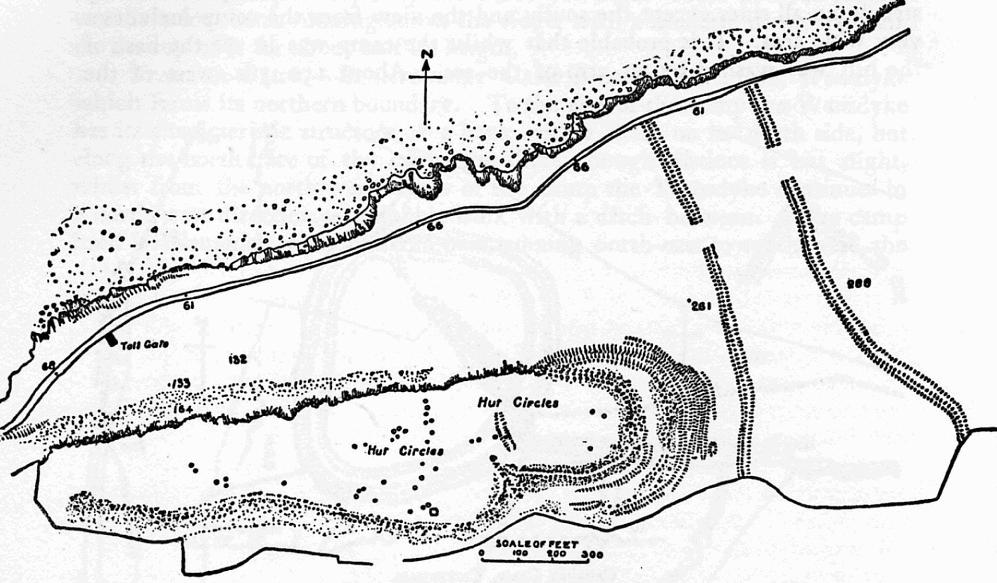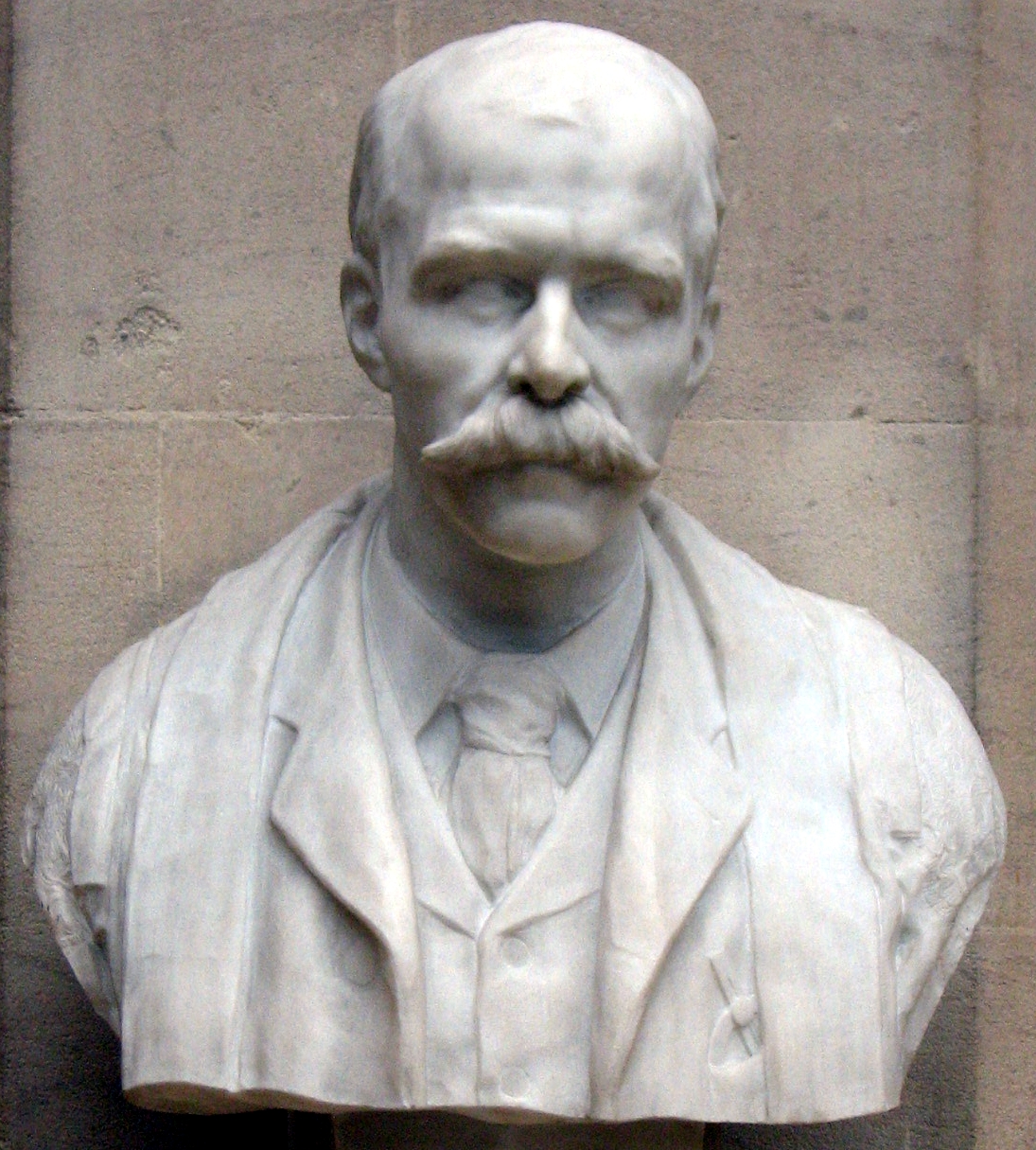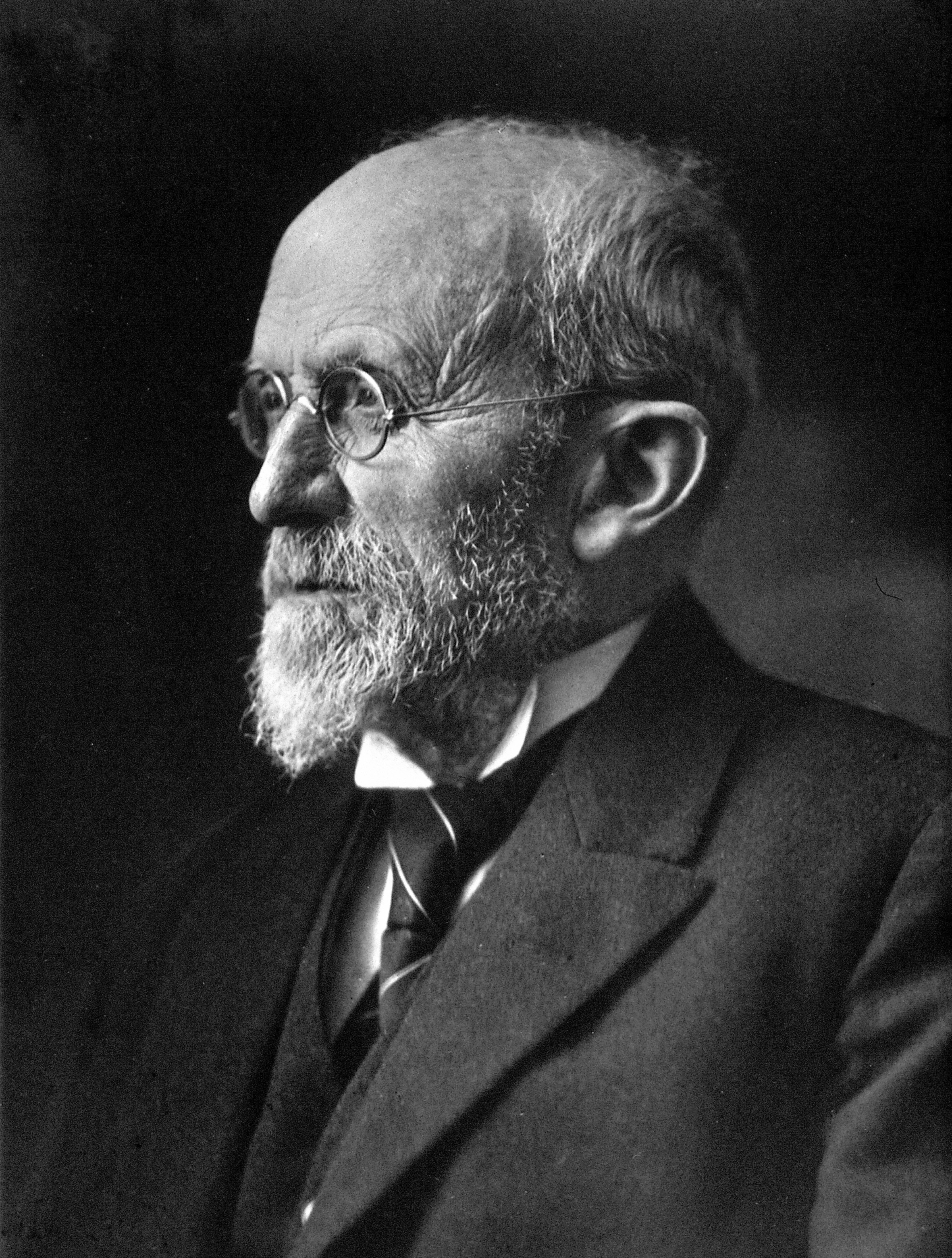|
Edward Alfred Minchin
Edward Alfred Minchin (26 February 1866 – 30 September 1915) was a British zoologist who specialised in the study of sponges and Protozoa. He became Jodrell Chair of Zoology at University College London in 1899, Chair of Protozoology at the University of London in 1906, and was elected a Fellow of the Royal Society in 1911. Early life and education Edward Alfred Minchin was born in Weston-super-Mare on 26 February 1866 to Charles N. Minchin and Mary J. Lugard. He was educated at the United Services College, Westward Ho!, and the Bishop Cotton Boys School, Bangalore, India. Minchin graduated from Keble College, Oxford in 1890 with first class honours in zoology, and three years later was elected Fellow of Merton College. Career After graduating Minchin was awarded first the University Scholarship, and then the Radcliffe Travelling Fellowship which enabled him to travel through Europe. He worked at several different institutions including the Stazione Zoologica in Naples, Obs ... [...More Info...] [...Related Items...] OR: [Wikipedia] [Google] [Baidu] |
Weston-super-Mare
Weston-super-Mare, also known simply as Weston, is a seaside town in North Somerset, England. It lies by the Bristol Channel south-west of Bristol between Worlebury Hill and Bleadon Hill. It includes the suburbs of Mead Vale, Milton, Oldmixon, West Wick, Worlebury, Uphill and Worle. Its population at the 2011 census was 76,143. Since 1983, Weston has been twinned with Hildesheim in Germany. The local area has been occupied since the Iron Age. It was still a small village until the 19th century when it developed as a seaside resort. A railway station and two piers were built. In the second half of the 20th century it was connected to the M5 motorway but the number of people holidaying in the town declined and some local industries closed, although the number of day visitors has risen. Attractions include The Helicopter Museum, Weston Museum, and the Grand Pier. Cultural venues include The Playhouse, the Winter Gardens and the Blakehay Theatre. The Bristol Channel has a l ... [...More Info...] [...Related Items...] OR: [Wikipedia] [Google] [Baidu] |
Stazione Zoologica
The Stazione Zoologica Anton Dohrn is a research institute in Naples, Italy, devoted to basic research in biology. Research is largely interdisciplinary involving the fields of evolution, biochemistry, molecular biology, neurobiology, cell biology, biological oceanography, marine botany, molecular plant biology, benthic ecology, and ecophysiology. Founded in 1872 as a private concern by Anton Dohrn, in 1982 the Stazione Zoologica came under the supervision and control of the Ministero dell'Università e della Ricerca Scientifica e Tecnologica (Ministry of Universities and Scientific and Technological Research) as a National Institute. History The idea Dohrn's idea was to establish an international scientific community provided with laboratory space, equipment, research material and a library. This was supported and funded by the German Empire, German Government, Thomas Henry Huxley, Charles Darwin, Francis Maitland Balfour, Francis Balfour and Charles Lyell among others. Dohrn ... [...More Info...] [...Related Items...] OR: [Wikipedia] [Google] [Baidu] |
James Peter Hill
James Peter Hill FRS (21 February 1873 – 24 May 1954) was a Scottish embryologist. Education Hill was born in Kennoway, Scotland on 21 February. He attended the Royal High School, Edinburgh, and graduated with a Doctor of Science from the University of Edinburgh in 1903. Career Hill moved to Australia in 1892. In Australia he formed with a group dubbed "The Fraternity of Duckmaloi" that did studies on the platypus and was named for a noted "hunting ground" for the animal. He is also noted for studies of marsupials. He returned to Britain and UCL in 1906 as the Jodrell Chair of Zoology and curator of what is now the Grant Museum of Zoology. In 1921 was made the first Chair of Embryology and Histology at UCL. Awards and honours He was elected a Fellow of the Royal Society in 1913 and delivered their Croonian Lecture in 1929. He received their Darwin Medal in 1940 for his research on marsupials and monotremes. He was elected President of the Anatomical Society of Great Br ... [...More Info...] [...Related Items...] OR: [Wikipedia] [Google] [Baidu] |
Lister Institute Of Preventive Medicine
The Lister Institute of Preventive Medicine, informally known as the Lister Institute, was established as a research institute (the British Institute of Preventive Medicine) in 1891, with bacteriologist Marc Armand Ruffer as its first director, using a grant of £250,000 from Edward Cecil Guinness of the Guinness family. It had premises in Chelsea in London, Sudbury in Suffolk, and Elstree in Hertfordshire, England. It was the first medical research charity in the United Kingdom. It was renamed the Jenner Institute (after Edward Jenner, the pioneer of smallpox vaccine) in 1898 and then, in 1903, as the Lister Institute in honour of the great surgeon and medical pioneer, Dr Joseph Lister. In 1905, the institute became a school of the University of London. History Until the 1970s the institute maintained laboratories and conducted research on infectious disease and vaccines. It was funded by manufacturing and selling vaccines. In the 1970s the institute ran into financial diffi ... [...More Info...] [...Related Items...] OR: [Wikipedia] [Google] [Baidu] |
Coelenterata
Coelenterata is a term encompassing the animal phyla Cnidaria (coral animals, true jellies, sea anemones, sea pens, and their relatives) and Ctenophora (comb jellies). The name comes , referring to the hollow body cavity common to these two phyla. They have very simple tissue organization, with only two layers of cells (ectoderm and endoderm), and radial symmetry. Some examples are corals, which are typically colonial, and hydrae, jellyfish, and sea anemones, which are solitary. Coelenterata lack a specialized circulatory system relying instead on diffusion across the tissue layers. Characteristics All coelenterates are aquatic, mostly marine, animals. The body form is radially symmetrical, diploblastic and does not have a coelom. The body has a single opening, the , surrounded by sensory tentacles equipped with either nematocysts or colloblasts to capture mostly planktonic prey. These tentacles are surrounded by a spacious cavity called the gastrovascular cavity, or coelen ... [...More Info...] [...Related Items...] OR: [Wikipedia] [Google] [Baidu] |
Calcareous Sponge
The calcareous sponges of class Calcarea are members of the animal phylum Porifera, the cellular sponges. They are characterized by spicules made of calcium carbonate in the form of calcite or aragonite. While the spicules in most species have three points, in some species they have either two or four points. Biology All sponges in this class are strictly marine, and, while they are distributed worldwide, most are found in shallow tropical waters. Like nearly all other sponges, they are sedentary filter feeders. All three sponge body plans are represented within class Calcarea : asconoid, syconoid, and leuconoid. Typically, calcareous sponges are small, measuring less than in height, and drab in colour. However, a few brightly coloured species are also known. Calcareous sponges vary from radially symmetrical vase-shaped body types to colonies made up of a meshwork of thin tubes, or irregular massive forms. The skeleton has either a mesh or honeycomb structure. Classifica ... [...More Info...] [...Related Items...] OR: [Wikipedia] [Google] [Baidu] |
Sponge Spicule
Spicules are structural elements found in most sponges. The meshing of many spicules serves as the sponge's skeleton and thus it provides structural support and potentially defense against predators. Sponge spicules are made of calcium carbonate or silica. Large spicules visible to the naked eye are referred to as megascleres, while smaller, microscopic ones are termed microscleres. The composition, size, and shape of spicules are major characters in sponge systematics and taxonomy. Overview Sponges are a species-rich clade of the earliest-diverging (most basal) animals. They are distributed globally, with diverse ecologies and functions, and a record spanning at least the entire Phanerozoic. Most sponges produce skeletons formed by spicules, structural elements that develop in a wide variety of sizes and three dimensional shapes. Among the four sub-clades of Porifera, three (Demospongiae, Hexactinellida, and Homoscleromorpha) produce skeletons of amorphous silica and on ... [...More Info...] [...Related Items...] OR: [Wikipedia] [Google] [Baidu] |
Grant Museum Of Zoology And Comparative Anatomy
The Grant Museum of Zoology and Comparative Anatomy is a natural history museum that is part of University College London in London, England. It was established by Robert Edmond Grant in 1828 as a teaching collection of zoological specimens and material for dissection. It is one of the oldest natural history collections in the UK, and is the last remaining university natural history museum in London. Notable specimens and objects held by the museum include a rare quagga skeleton, thylacine specimens, dodo bones and Blaschka glass models. History Robert Edmond Grant was the first Chair of Zoology in England, the founder of the Grant Museum collection and its first curator. He set the precedent that the Chair of Zoology at UCL (then the University of London) was also the curator of the comparative zoology collection. On his death Grant left his own collection to the museum, and was briefly succeeded by William Henry Allchin before care of the collection passed to invertebrate z ... [...More Info...] [...Related Items...] OR: [Wikipedia] [Google] [Baidu] |
Raphael Weldon
Walter Frank Raphael Weldon Fellow of the Royal Society, FRS (15 March 1860 – 13 April 1906), was an English evolutionary biologist and a founder of biometry. He was the joint founding editor of ''Biometrika'', with Francis Galton and Karl Pearson. Family Weldon was the second child of the journalist and industrial chemist, Walter Weldon, and his wife Anne Cotton. On 13 March 1883, Weldon married Florence Tebb, daughter of the social reformer William Tebb. Life and education Medicine was his intended career and he spent the academic year 1876-1877 at University College London. Among his teachers were the zoologist E. Ray Lankester and the mathematician Olaus Henrici. In the following year he transferred to King's College London and then to St John's College, Cambridge in 1878. There Weldon studied with the developmental morphologist Francis Maitland Balfour, Francis Balfour who influenced him greatly; Weldon gave up his plans for a career in medicine. In 1881 he gained a fi ... [...More Info...] [...Related Items...] OR: [Wikipedia] [Google] [Baidu] |
Guy's Hospital
Guy's Hospital is an NHS hospital in the borough of Southwark in central London. It is part of Guy's and St Thomas' NHS Foundation Trust and one of the institutions that comprise the King's Health Partners, an academic health science centre. It is a large teaching hospital and is, with St Thomas' Hospital and King's College Hospital, the location of King's College London GKT School of Medical Education. The hospital's Tower Wing (originally known as Guy's Tower) was, when built in 1974, the tallest hospital building in the world, standing at with 34 floors. The tower was overtaken as the world's tallest healthcare-related building by The Belaire in New York City in 1988. As of June 2019, the Tower Wing, which remains one of the tallest buildings in London, is the world's fifth-tallest hospital building. History The hospital dates from 1721, when it was founded by philanthropist Thomas Guy, who had made a fortune as a printer of Bibles and greatly increased it by speculat ... [...More Info...] [...Related Items...] OR: [Wikipedia] [Google] [Baidu] |
Ray Lankester
Sir Edwin Ray Lankester (15 May 1847 – 13 August 1929) was a British zoologist.New International Encyclopaedia. An invertebrate zoologist and evolutionary biologist, he held chairs at University College London and Oxford University. He was the third Director of the Natural History Museum, London, and was awarded the Copley Medal of the Royal Society. Life Ray Lankester was born on 15 May 1847 on Burlington Street in London, the son of Edwin Lankester, a coroner and doctor-naturalist who helped eradicate cholera in London, and his wife, the botanist and author Phebe Lankester. Ray Lankester was probably named after the naturalist John Ray: his father had just edited the memorials of John Ray for the Ray Society. In 1855 Ray went to boarding school at Leatherhead, and in 1858 to St Paul's School. His university education was at Downing College, Cambridge, and Christ Church, Oxford; he transferred from Downing, after five terms, at his parents' behest because Christ Church ... [...More Info...] [...Related Items...] OR: [Wikipedia] [Google] [Baidu] |
Richard Hertwig
Richard Wilhelm Karl Theodor Ritter von Hertwig (23 September 1850 in Friedberg, Hesse – 3 October 1937 in Schlederloh, Bavaria), also Richard Hertwig or Richard von Hertwig, was a German zoologist and professor of 50 years, notable as the first to describe zygote formation as the fusing of spermatozoa inside the membrane of an egg cell during fertilization. "Richard von Hertwig – Wikipedia" (German), German Wikipedia, 2006-10-29, de.wikipedia.org webpage: GermanWP-Richard_von_Hertwig. Richard Hertwig was the younger brother of Oscar Hertwig, who also analyzed zygote formation. The two Hertwig brothers worked together until 1883 (more at: Oscar Hertwig). The Hertwig brothers were the most eminent scholars of Ernst Haeckel (and Carl Gegenbaur), each brother becoming a long-term professor in Germany. They were independent of Haeckel's philosophical speculations but took his ideas in a positive way to widen their concepts in zoology. Initially, between 18 ... [...More Info...] [...Related Items...] OR: [Wikipedia] [Google] [Baidu] |






